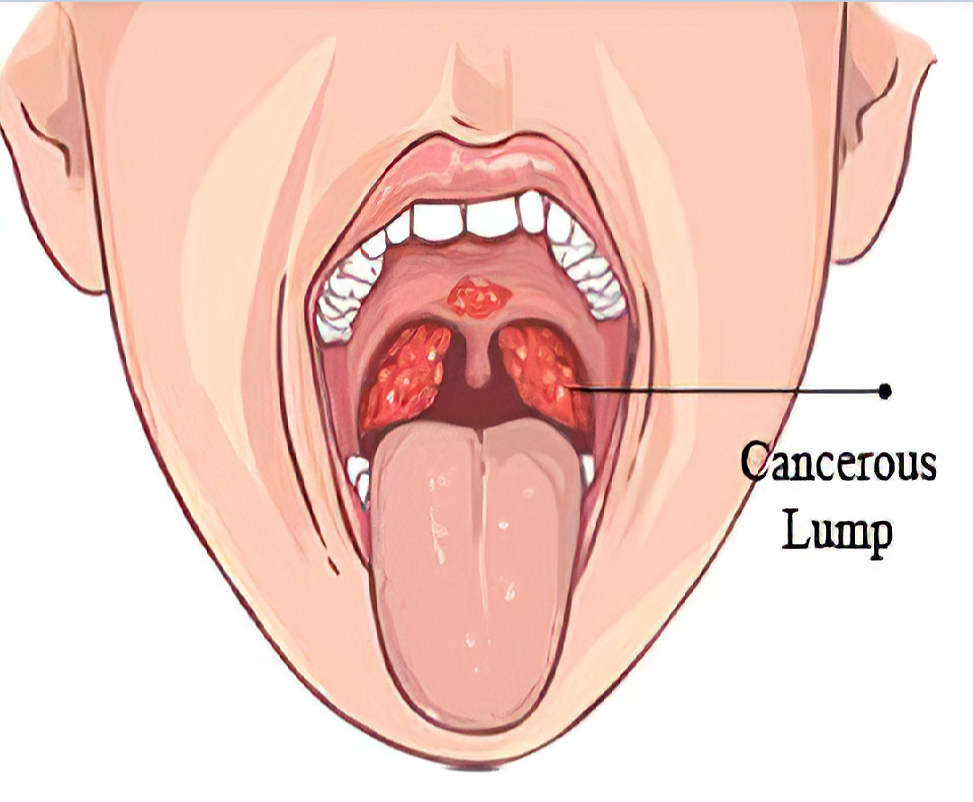Introduction
The oral cavity basically means the mouth and most of the things in it. The oropharynx is the throat part right behind the oral cavity. The most common type of this cancer is known as the squamous cell carcinoma. HPV is the cause of most of this cancer in the oropharynx. Verrucous carcinoma is the rarer variant of this. There are also minor salivary gland cancers and lymphomas. Some signs of this cancer include: leukoplakia (white/grey), erythroplakia (red and bleeds), and erythroleukoplakia (red and white). These could be cancer, pre-cancer, or something that won't do anything. A biopsy is used to figure out if these areas are actually cancer. Some risk factors can be seen here.
Mechanisms and genetic alterations
The most common mutated genes for oropharyngeal cancer are ROS1, TP53, KMT2D, ERBB4, EPHA7, CDKN2A, FAT1. The most common copy number alteration genes are CDKN2A, CDKN2B, CCND1, FGF19, FGF3.
Current oral and oropharyngeal cancer treatments
At stage 0, the cancer hasn't grown far in. So surgery is often used here, getting rid of the outermost tissue. After surgery, sometimes raidiation therapy is used to prevent the cancer from returning. At stage 1 and 2, surgery with radiation therapy is used. However, chemo with radiation is also another possible treatment. At stage 3 and 4A, the cancer has grown into closeby tissue and/or lymph nodes. This requires surgery then radiation/chemoradiation. at stages 4B and 4C the cancer has spread to further parts of the body. At 4B, surgery is sufficient. At 4C, chemo/cetuximab is used.
New treatments in clinical trials

